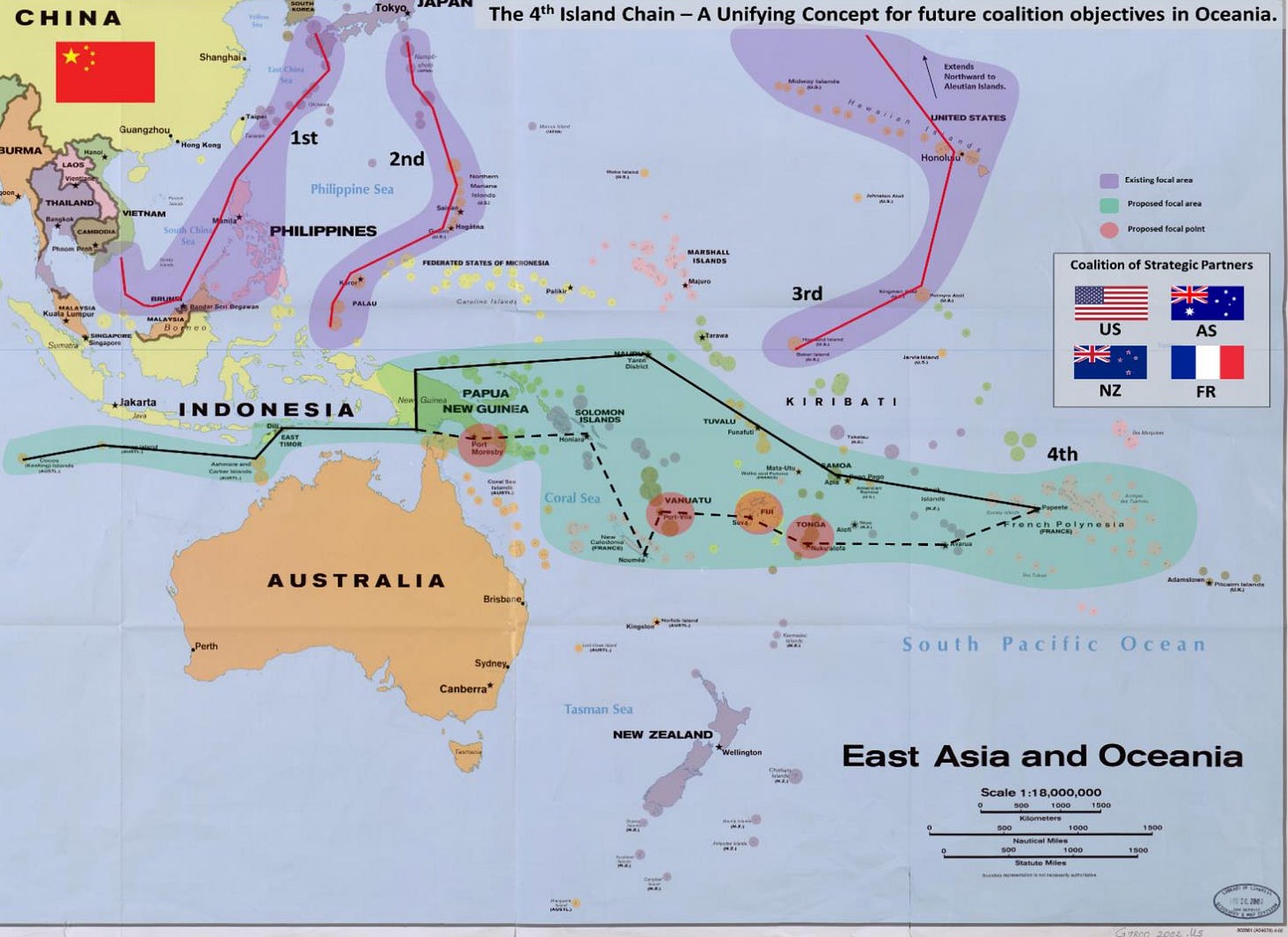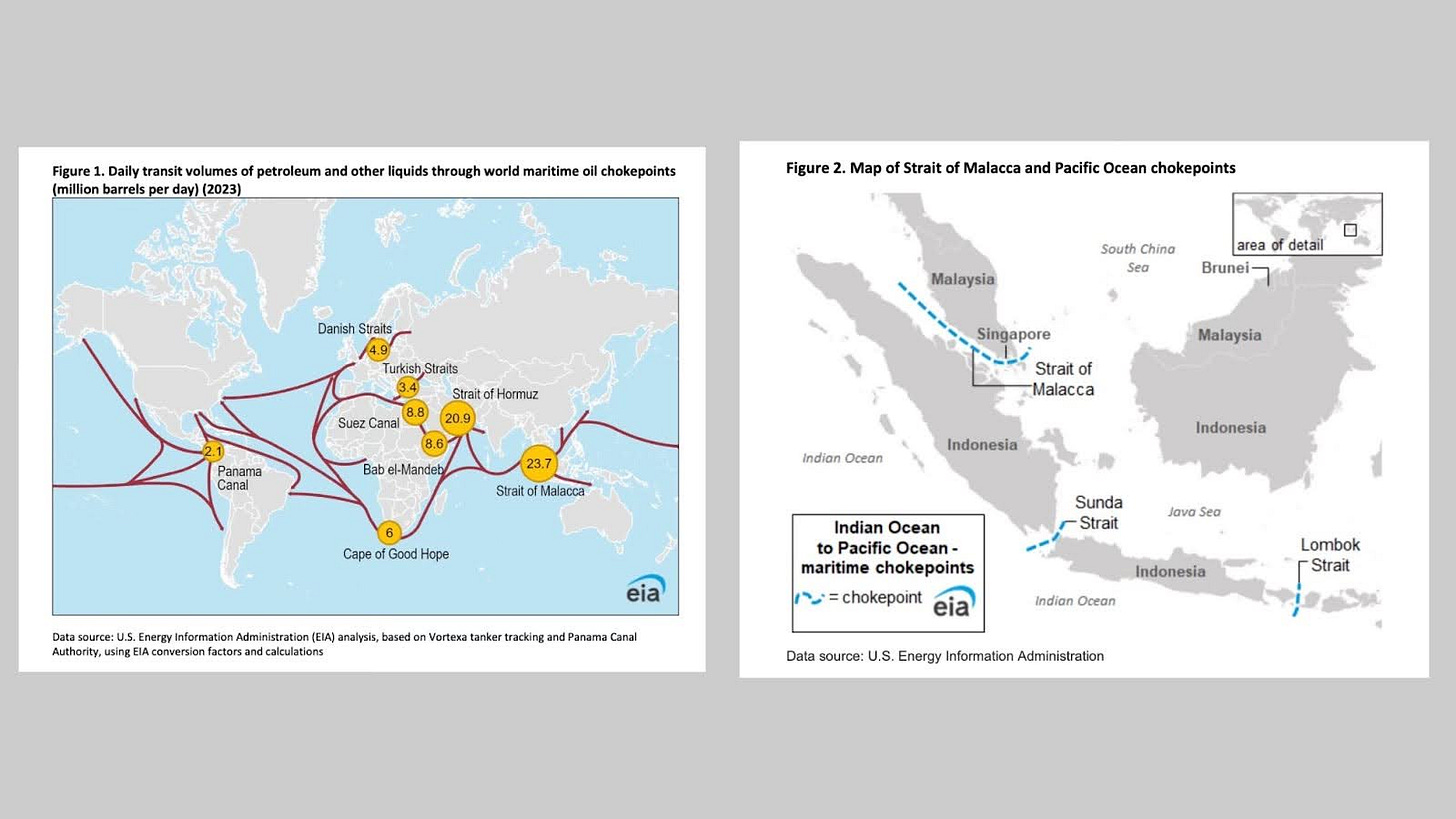John M. Larrier (Defense Bulletin)
Disclaimer: This write-up was written earlier, long before the developments of the last few months in the Indo-Pacific. Simply an explainer of China’s employment of coercive measures against key U.S. partners in the region, the majority of the topics touched on will still be highly relevant. Enjoy!
Rundown
Bulletin From the Borderlands has covered, in-depth, many of the actions of the People’s Republic of China (PRC) against U.S. allies and partners in the Western Indo-Pacific region. In order to provide increased clarity on developments in the region, we’ll provide a “30,000 ft” rundown of the strategic motivations behind some of China’s actions, the U.S. response to said actions, and the strategic implications of both. The first part, which will be released today, will cover Chinese coercion measures against the Republic of China (Taiwan) and the Philippines. In the past few months, a notable number of significant geopolitical developments have taken place. Israel-Hamas/Israel-Hezbollah ceasefire deals, Russia’s signaling strike in Ukraine using a non-nuclear strategic weapon, U.S. President Donald J. Trump’s lightning start to his second term, and many other developments and threats have dominated the information space. However, the Indo-Pacific, while not always in the daily spotlight, continues to be a theater of competition increasingly characterized by worrying geopolitical tensions. Largely centered around the overarching competition between the People’s Republic of China (PRC) and the United States, the region continues to grow “hotter” as Beijing seeks to enact its strategic outlook in the region. The PRC continues to implement a multifaceted regional strategy by combining economic coercion, military expansion, diplomatic initiatives, and direct confrontation to realize its strategic outlook. In the past few years, the East Asian powerhouse has directed a significant portion of its strategic focus towards Taiwan, officially the Republic of China (ROC), and the Philippines. This has, in turn, put them at loggerheads with the United States.
Measures Employed by China

Taiwan, which the PRC sees as a breakaway province, has been on the receiving end of many of the aforementioned coercive measures. The threat picture around Taiwan is complex. Aerial assets of the People’s Liberation Army Air Force (PLAAF) cross the extended median line in the Taiwan Strait on an almost daily basis, prompting the ROC Armed Forces to use their limited resources to monitor and/or move to interdict PLAAF aircraft far within their Air Defense Identification Zone (ADIZ). Actions like this are part of a wider PRC strategy to isolate the island nation and normalize Chinese territorial claims. This tactic, colloquially known as “boiling the frog,” sees the PRC using regular incremental increases in coercive measures, such as aircraft and naval violations, to slowly implement a beneficial status quo, interrupted by oftentimes disproportionate large-scale military exercises around Taiwan in response to actions by ROC/ROC-aligned decision-makers that the PRC sees as “escalatory.” It’s these large-scale military actions that have arguably been the most worrying. People’s Liberation Army (PLA) forces have grown increasingly able to quickly switch from a low to high operational tempo around Taiwan, often in response to seemingly mundane domestic and diplomatic moves by ROC and partner nation decision-makers. During these sporadic high-tempo operations, the PLA exercises the ability to conduct a number of Taiwan-centric operations, including the blockade of key thoroughfares of trade and directly combating theoretical allied relief forces marshalling outside the 1st Pacific Island Chain in the event of a kinetic operation against Taiwan.

The Philippines, the archipelago nation that sits at the base of the 1st Island Chain, finds itself adjacent to the South China Sea, a region that holds strategic importance to both the U.S. and the PRC due to it providing a key outlet/inlet for the Malacca Strait. Both U.S. and PRC decision-makers acknowledge the importance of maintaining control over these key thoroughfares of trade in the event of a conflict in the Western Indo-Pacific. Chinese end goals for the sub-region, as they relate to the Philippines, differ greatly from their stated goal of assimilating Taiwan into the PRC. Transversely, the measures employed against the Philippines to realize greater control over territories in the South China Sea that are disputed by the Philippines and China differ greatly. Since 2013, China has built at least 27 outposts in the Paracel and Spratly Islands (disputed with Vietnam) in the South China Sea and has expanded their footprint there significantly by dredging and building artificial islands. China has since based a number of military assets on the islands, including air defense systems, to effectively create an anti-access/area-denial (A2/AD) bubble around them. Additionally, as part of the territorial dispute with the Philippines, both nations have conducted actions, with China’s being far more aggressive, to maintain control over key territories in the South China Sea. China has utilized weaponized fishing and “civilian” maritime fleets, attempted to blind personnel and systems on Filipino vessels using lasers, directly rammed Filipino Coast Guard cutters with their own, and maintained, like with Taiwan, a consistent and increasing Chinese Coast Guard and PLAN presence in the South China Sea.
In Taiwan, new developments surrounding China’s efforts to realize a force capable of conducting an operation to forcibly assimilate the island nation have caused a significant stir in the past months. These developments, along with the U.S. response, or lack thereof, to China's actions in the South China Sea and around Taiwan, will be covered in the next issue. However, it should be noted that the aforementioned dynamic in the South China Sea, combined with China’s motivation to realize its goals there, even if it means stepping up the escalation ladder, makes it reasonably possible that they currently lack the ability to directly control the sub-region but assess that they must before a direct move on or around Taiwan is carried out.
End.
Thanks for reading!
Notable Updates:
BIG congratulations to Cole Proebstel, an intelligence practitioner from New Zealand and founder of Alcon Intelligence Ltd., for the recent accreditation of the Intelligence Analysis Certification Course (IACC) by the International Association for Intelligence Education and the Continued Professional Development Standards Office.
- Defense Bulletin




